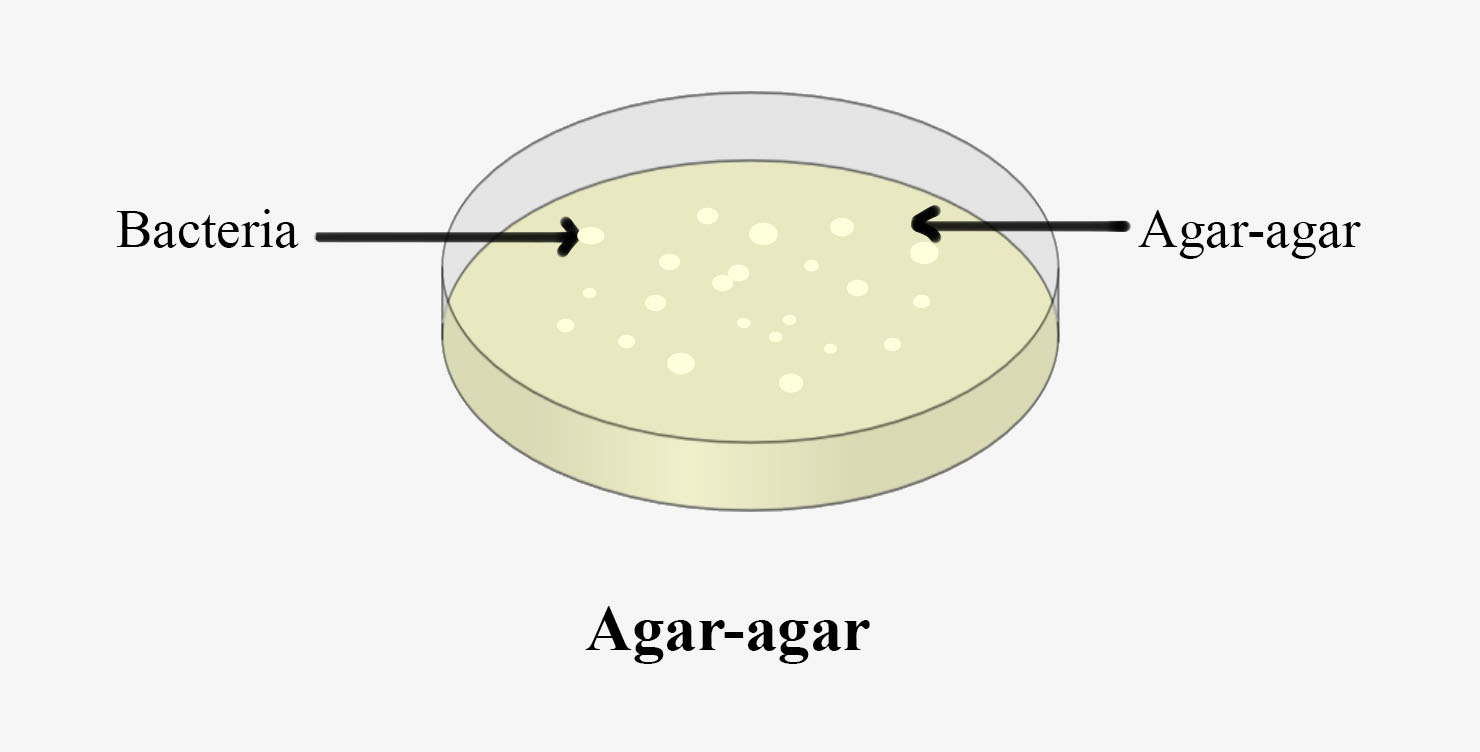
Answer
450.3k+ views
Hint: The algal product which is used in laboratories culture media is a jelly-like substance and is obtained from red algae. It was discovered in Japan in 1658 by Mino Tarōzaemon. Agar-Agar was first described for use in microbiology in 1882 by a very famous German microbiologist Walther Hesse.
Complete step by step answer:
Agar-agar which was obtained from the algae Gelidium is used in laboratory culture media. The word "agar" comes from agar-agar, the Malay name for the red algae which is Gelidium or Gracilaria from which the jelly is produced.

Additional Information:
Agar consists of a combination of two polysaccharides: agarose and agaropectin, with agarose making up about 70% of the mixture. Agarose is commonly known to be a linear polymer, which is made up of repeating units of agarobiose, a disaccharide made from D-galactose, and 3,6-anhydro-L-galactopyranose. Agaropectin- It is a type of heterogeneous mixture of some smaller molecules that occur in lesser amounts and is formed from alternating units of D-galactose and L-galactose heavily modified with acidic side-groups, like sulfate and pyruvate. There are many uses of Agar – Agar. Some of them are:-
- Agar-Agar is also used to make jellies, puddings, and custards. When jellies have to be made, it is boiled in water until the solids dissolve. Sweetener, flavoring, and coloring agents are then added, and the liquid is poured into molds to be served as desserts and allowed to get solidified.
- In microbiology, it is used in making an agar plate which is used to provide a growth medium using a mix of agar and other nutrients in which microorganisms, such as bacteria and fungi, can be grown artificially and studied with the help of microorganisms.
Note: The melting point of Agar is find out to be $ { 85 }^{ o }{ C }$ and the solidifying temperature is approx $ { 32-40 }^{ o }{ C }$ . Due to this type of temperature, it creates a perfect balance between easy melting and good gel stability at relatively high temperatures.
Complete step by step answer:
Agar-agar which was obtained from the algae Gelidium is used in laboratory culture media. The word "agar" comes from agar-agar, the Malay name for the red algae which is Gelidium or Gracilaria from which the jelly is produced.

Additional Information:
Agar consists of a combination of two polysaccharides: agarose and agaropectin, with agarose making up about 70% of the mixture. Agarose is commonly known to be a linear polymer, which is made up of repeating units of agarobiose, a disaccharide made from D-galactose, and 3,6-anhydro-L-galactopyranose. Agaropectin- It is a type of heterogeneous mixture of some smaller molecules that occur in lesser amounts and is formed from alternating units of D-galactose and L-galactose heavily modified with acidic side-groups, like sulfate and pyruvate. There are many uses of Agar – Agar. Some of them are:-
- Agar-Agar is also used to make jellies, puddings, and custards. When jellies have to be made, it is boiled in water until the solids dissolve. Sweetener, flavoring, and coloring agents are then added, and the liquid is poured into molds to be served as desserts and allowed to get solidified.
- In microbiology, it is used in making an agar plate which is used to provide a growth medium using a mix of agar and other nutrients in which microorganisms, such as bacteria and fungi, can be grown artificially and studied with the help of microorganisms.
Note: The melting point of Agar is find out to be $ { 85 }^{ o }{ C }$ and the solidifying temperature is approx $ { 32-40 }^{ o }{ C }$ . Due to this type of temperature, it creates a perfect balance between easy melting and good gel stability at relatively high temperatures.
Recently Updated Pages
Identify the feminine gender noun from the given sentence class 10 english CBSE

Your club organized a blood donation camp in your city class 10 english CBSE

Choose the correct meaning of the idiomphrase from class 10 english CBSE

Identify the neuter gender noun from the given sentence class 10 english CBSE

Choose the word which best expresses the meaning of class 10 english CBSE

Choose the word which is closest to the opposite in class 10 english CBSE

Trending doubts
Sound waves travel faster in air than in water True class 12 physics CBSE

A rainbow has circular shape because A The earth is class 11 physics CBSE

Which are the Top 10 Largest Countries of the World?

Fill the blanks with the suitable prepositions 1 The class 9 english CBSE

One Metric ton is equal to kg A 10000 B 1000 C 100 class 11 physics CBSE

How do you graph the function fx 4x class 9 maths CBSE

The Equation xxx + 2 is Satisfied when x is Equal to Class 10 Maths

Give 10 examples for herbs , shrubs , climbers , creepers

Change the following sentences into negative and interrogative class 10 english CBSE




